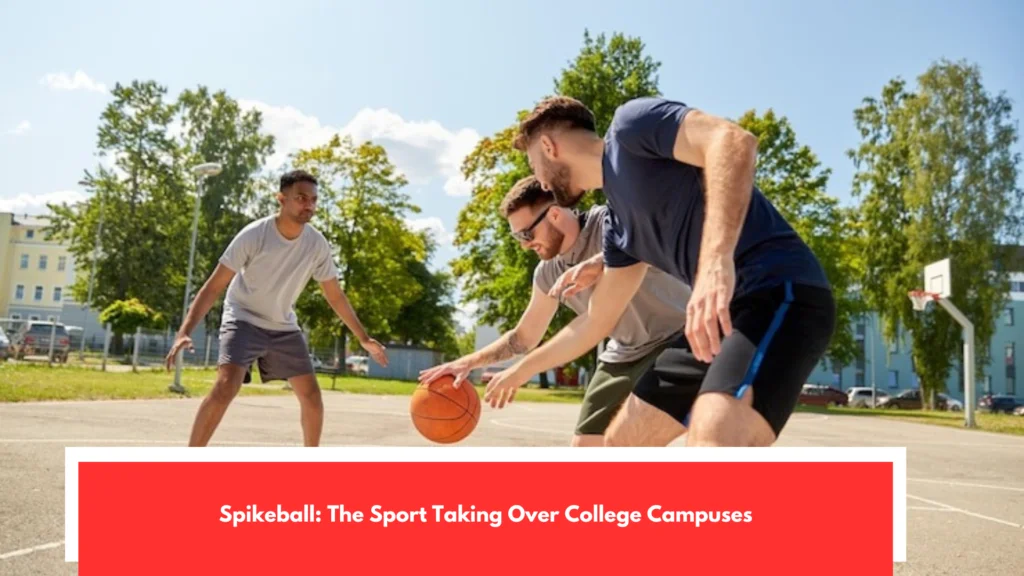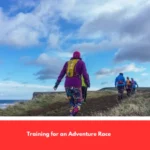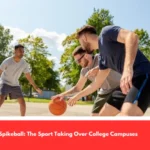Probably, you’ve recorded a video of spikeball, this wonderful alternative sport, on social media. Some people have even played volleyball by the beach, also called beach spikeball. But, do people really consider spikeball that appealing Are its strategies useful in our physical education classes Jeff Knurek, who was a toymaker, invented Spikeball in Chicago in the year 1989. The goal in developing Tojk-Vink was to produce a beach game in which the fun and excitement of volleyball could be kept, while the matches take place on a much smaller playing area than what a beach volleyball court uses, similar in spirit to Spikeball: The Sport Taking Over.
As a result, Andree came up with the idea of a circular trampoline (roundnet) so people could play volleyball in any large area. The game is also known by the name roundnet. The sport of Spikeball is popular all over the world and now has its own governing body as well as contests at both national and international levels. The game flourished in Spain when the AER and the ADAL started to position it as an alternative sport in schools. In the following infographic, you can find the guidelines of Spikeball, which will explain how to play it.
How do you play spikeball?

The rule from Castile-La Mancha government establishes that different sporting events help develop skills in the curriculum for Primary Education here. In particular, there are certain habits that stand out. As for the second, sports may look different based on their features, for example invasion sports (such as handball, ultimate, or rugby-tag), net and wall sports (such as badminton, frontenis, pickleball, paladós, or similar), field and bat sports (including baseball, softball, and others), target and target sports (like boccia, archery, and similar), wrestling (such as judo, fencing, or other indigenous wrestling types), and individual sports (for instance athletics and their variations).
That is why a Spikeball set used in Physical Education belongs to several categories of sports games. At the same time, we list the ways this sport can enhance students’ skills, as shown below. Through playing in physical education lessons, students can work on their basic as well as specific motor skills. Being a no-contact sport, paddling is all about making the best movements in response to the positions of the people around you. Examples of movements are walking, running, or moving from side to side.
History of spikeball

Being able to jump in this sport is important since it allows students to get the ball without having to go very far. Turning is a necessity in learning the game because it is very simple but also critical. Since the game is fast and covers all sides, you need to move in several directions. After the serve, the player at the back of the team shoulders the responsibility to toss the ball to the person waiting to hit. Throughout the game, members of the team use their hitting skills to send the ball to each other and aim to get it back across the net.
Spikeball will help improve our students’ bodies and general health. In this way, we will encourage ourselves to be active and healthy by joining in on regular physical, recreational, and sporting activities, following behaviors that build physical, mental, and social health, and to be responsible during team activities to make sure regular exercise and exercise habits become part of our lives. Thus, practicing shows how useful it is in increasing endurance and supports the growth of physical, mental, and social health.
What makes this game special?

Many people play it as a group sport. For thrill-seekers across the globe, adventure sports have always been dear to them. If you love action, you won’t be boring with activities such as skydiving or white-water rafting. Over the past few years, the sport of zorbing has gained fans. In this write-up, we are focusing on where zorbing comes from, its equipment, how to stay safe, and the amazing excitement of it. The first person who came up with zorbing was Andrew Akers in New Zealand in the 1990s.
The idea was very simple yet made a big difference: have someone sit in an inflatable sphere and watch them roll down a hill. They patented their product and chose the name “Zorb,” which eventually meant the activity itself. Over the years, people across the globe have discovered zorbing and regard it as an exciting sport that tourists love. Most of what makes zorbing fun and exhilarating is the specialized equipment used. There are mainly two kinds of zorbing available for adventure seekers.
Conclusion

Would you get into an inflatable sphere and let gravity take you down a hill It turns out people take part in zorbing, sphereing, and orbing. In New Zealand’s Rotorua, people riding zorbs abandon themselves to gravity in a special ball that is also cushioned and secure. It’s acceptable for them to ride in a car by themselves or with one or two people. In a Brave Wilderness video from 2019, Mark Vins explores Zorb Rotorua, where he gets to try the sport called zorbing for the first time on different and exciting tracks. What really makes it exciting, Zorb Rotorua’s websites says, is that they add 40 liters of water into every ball, which slows and slips you throughout the ride.
During the 1970s, French teenager Gilles Ebersolt thought up the Ballule (also known as the Bubble) and spent around two years making it. He then rolled in it across some well-known monuments and sites around the world. It was in 1994 that Andrew Akers and Dwane van der Sluis came up with the new concept, which grew into the famous extreme sports ride known today in New Zealand. Some people might be wondering what zorbing is. To put it simply, zip-lining is an exciting adventure and extreme sport from New Zealand.





